Archives
- By thread 5315
-
By date
- June 2021 10
- July 2021 6
- August 2021 20
- September 2021 21
- October 2021 48
- November 2021 40
- December 2021 23
- January 2022 46
- February 2022 80
- March 2022 109
- April 2022 100
- May 2022 97
- June 2022 105
- July 2022 82
- August 2022 95
- September 2022 103
- October 2022 117
- November 2022 115
- December 2022 102
- January 2023 88
- February 2023 90
- March 2023 116
- April 2023 97
- May 2023 159
- June 2023 145
- July 2023 120
- August 2023 90
- September 2023 102
- October 2023 106
- November 2023 100
- December 2023 74
- January 2024 75
- February 2024 75
- March 2024 78
- April 2024 74
- May 2024 108
- June 2024 98
- July 2024 116
- August 2024 134
- September 2024 130
- October 2024 141
- November 2024 171
- December 2024 115
- January 2025 216
- February 2025 140
- March 2025 220
- April 2025 233
- May 2025 239
- June 2025 303
- July 2025 127
-
A playbook for more responsible manufacturing
the Daily read
Try a different approach .
Share this email 



AN ARTICLE A DAY, PICKED BY OUR EDITORS 
Supply chain resilience and local manufacturing are increasingly important in today’s geopolitical context. But how can organizations bolster their operations, while also engaging their workforces and driving sustainable operations? Innovation, leadership, and inspiration will be needed—and a playbook for driving responsible industry transformation is coming together, powered by insights from the 103 members of the Global Lighthouse Network (a World Economic Forum initiative in collaboration with McKinsey). Dive deeper on the six crucial enablers of transformations toward responsible production in a new article, and be sure to sign up for a Lighthouses Live event on April 6 for even more insights. — Joyce Yoo, digital editor, New York 
Lighthouses reveal a playbook for responsible industry transformation The advanced factories of the Global Lighthouse Network show how sustainability and workforce engagement can accelerate and scale Fourth Industrial Revolution transformation—responsibly. Try a different approach 

Quote of the Day —Navigate the complexities of modern retailing and the importance of data in "Six strategic priorities for modern merchant leaders" 
Chart of the Day 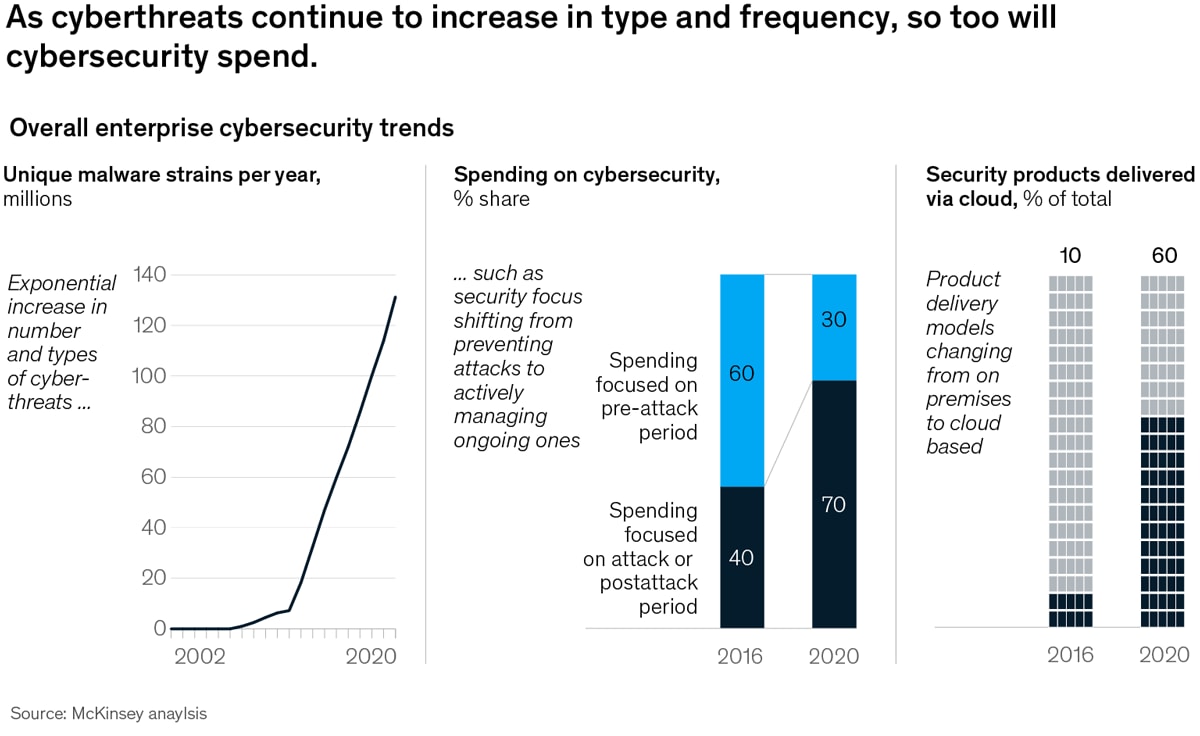
See today’s chart 
Also New 

Bridging the labor mismatch in US construction US construction projects are short-staffed today, and the problem is set to get worse. Here’s what the sector can do to close the gap. Reimagine an industry 


The $773 billion question: Inflation’s impact on defense spending How will the Defense Department deal with possible long-term inflation and price increases for its most important programs? Understand the effects 


Rural rising: Economic development strategies for America’s heartland There is no one-size-fits-all economic development strategy for rural communities. How can local leaders—including governments, businesses, and individuals—put rural regions on track to thrive? Strategies to thrive 


Follow our thinking 



Share these insights Did you enjoy this newsletter? Forward it to colleagues and friends so they can subscribe too.
Was this issue forwarded to you? Sign up for it and sample our 40+ other free email subscriptions here.This email contains information about McKinsey’s research, insights, services, or events. By opening our emails or clicking on links, you agree to our use of cookies and web tracking technology. For more information on how we use and protect your information, please review our privacy policy. You received this email because you subscribed to the Daily Read newsletter. Manage subscriptions | Unsubscribe Copyright © 2022 | McKinsey & Company, 3 World Trade Center, 175 Greenwich Street, New York, NY 10007
by "McKinsey Daily Read" <publishing@email.mckinsey.com> - 06:48 - 1 Apr 2022 -
The rising toll of the war in Ukraine
McKinsey&Company
Understand the crisis
Share this email 



New from McKinsey Global Institute 
The rising toll of the war in Ukraine Lives lost and upended. Soaring food and energy prices. Supply chains at risk. Much is at stake as the war continues. Understand the crisis 


Explore this and future episodes of The McKinsey Podcast on our site, and subscribe to ensure you never miss a new one. Subscribe via Apple Podcasts, Google Podcasts, Spotify, Stitcher, and RSS. 
Related Reading 
War in Ukraine: Lives and livelihoods, lost and disrupted 
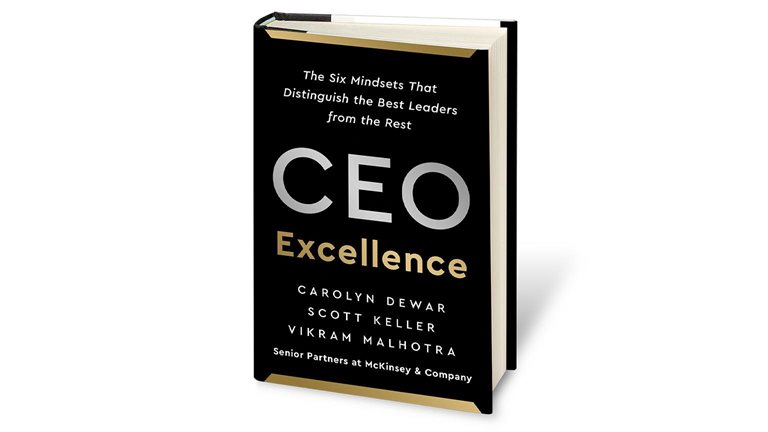
A master class from the world’s best CEOs 


Follow our thinking 


McKinsey Insights - Get our latest
thinking on your iPhone, iPad, or Android

This email contains information about McKinsey’s research, insights, services, or events. By opening our emails or clicking on links, you agree to our use of cookies and web tracking technology. For more information on how we use and protect your information, please review our privacy policy. You received this email because you subscribed to our McKinsey Global Institute alert list. Manage subscriptions | Unsubscribe Copyright © 2022 | McKinsey & Company, 3 World Trade Center, 175 Greenwich Street, New York, NY 10007
by "McKinsey & Company" <publishing@email.mckinsey.com> - 04:58 - 1 Apr 2022 -
Create custom dashboards for faster troubleshooting
New Relic
Simple steps to see context for system performance in real-time.
Quick & custom visualizations
Organize your insights by creating dashboards and sharing them with your team. Combine data from anywhere in the New Relic One platform to build flexible, interactive visualizations.
Set up a dashboard 
Why you should do this
To give context and gain insight into what your system is doing in real time.What this does
You can create high-density, interactive visualizations for whatever data you want to see from anywhere in the New Relic platform.Common uses
- Display an application performance dashboard on a TV in the office
- Give stakeholders a business performance dashboard that answers their key questions
- Track PagerDuty alerts to identify trends and patterns
Set up a dashboard If you have questions along the way, check our docs, community, or take a hands-on lab.
 View in browser
View in browser
Unsubscribe or Change Your Email Address and preferences at any time.
For information about our privacy practices, see our Privacy Policy.
Need to contact New Relic? You can chat or call us at 888-643-8776.
New Relic, Inc. 188 Spear St, San Franciso, CA 94105.
© 2021 New Relic, Inc. All rights reserved.
New Relic logo are trademarks of New Relic, Inc.
by "Max from New Relic" <mfrancisco@newrelic.com> - 12:00 - 1 Apr 2022 -
It’s time to update your company’s cybersecurity defenses
The Shortlist
Plus, operational tools CEOs can use to tackle rising prices .
Share this email 



Our best ideas, quick and curated | April 1, 2022 View in browser 
Given the geopolitical tensions surrounding the conflict in Ukraine, it’s a good time to remind companies that cybersecurity planning is crucial. Plus, new funding that could help quench US water needs, and a McKinsey senior partner and heavy-metal guitarist on the lifelong joys of rock ‘n’ roll. 
It’s the call that CEOs dread. A ransomware attack has been launched against the company, vital files have been encrypted, and paying a hefty ransom is the only way out. What used to be considered a fringe threat is now anything but. According to some estimates, ransomware costs could reach $265 billion globally by 2031. A four-part strategy. In the United States, ransomware attacks on supply chains rose by 42 percent in the first quarter of 2021, while security threats against industrial control systems and operational technology more than tripled in 2020. To ensure that they remain resilient in this perilous new environment, companies should focus on ransomware prevention, preparation, response, and recovery strategies now rather than later. The payment or nonpayment of a ransom could depend on whether an organization has mastered the basics of these four strategies. Sounding boards. Fortunately, leaders are not alone in this fight. Boards can act as a partner. They can engage in regular conversations with company leadership on cybersecurity issues, making sure the executive team is preparing the whole organization for the eventuality of an attack, not simply leaving it to the chief information officer and the technical team. The experts are evolving too. Companies and their boards are not the only ones being forced to pivot in the face of more sophisticated cybersecurity challenges. Leading cybersecurity providers have found that they must do the same, adjusting their strategies and their product and service offerings to meet new security objectives. These areas include perimeter security, next-generation identity and access controls, remote access, security automation, and security training. Walking the talk. While organizations in most industries have been focusing on cybersecurity for some time, the maturity of their approaches is not uniform. In 2021, McKinsey assessed the cybersecurity-maturity level of more than 100 companies and institutions in a number of industry sectors and learned that while some in banking and healthcare have achieved fair progress, most organizations—in all industries—still have a ways to go to protect their information assets against threats and attacks. Practice good digital hygiene. As former US congressman Will Hurd explained to McKinsey last year in a podcast about cyber resilience in the federal government, it all comes down to digital hygiene. “We shower. We brush our teeth. We comb our hair. We do all those things in our personal hygiene, and we should be doing those basic things in our digital hygiene, too.” For government, upgrading antiquated IT infrastructure to meet today’s threats is hard enough, let alone anticipating future attacks. Recognizing the cybersecurity skill sets needed across the federal government is a crucial step. Building resilience. Creating and updating a strong cybersecurity strategy is part of a broader attitude toward resilience. The global economy has demonstrated significant resilience through the COVID-19 pandemic, bouncing back faster than expected. Economic momentum remains strong, but organizations are encountering cross-currents in supply chains, workforce availability, inflation, and more. It’s worth underscoring that the foundations of future growth are often laid as societies respond to the weaknesses crises expose. History shows that in times of disruption, resilience depends on adaptability and decisiveness. — Heather Byer 
OFF THE CHARTS Water, water projects everywhere Aging water systems in the United States are in need of significant upgrades. The $1 trillion infrastructure bill passed in late 2021 allocates $55 billion to water initiatives over the next five years. This funding will address dire needs in communities where network pipes are nearly 50 years old and where some cast-iron pipes were installed more than a century ago. 
Check out our chart of the day here. 
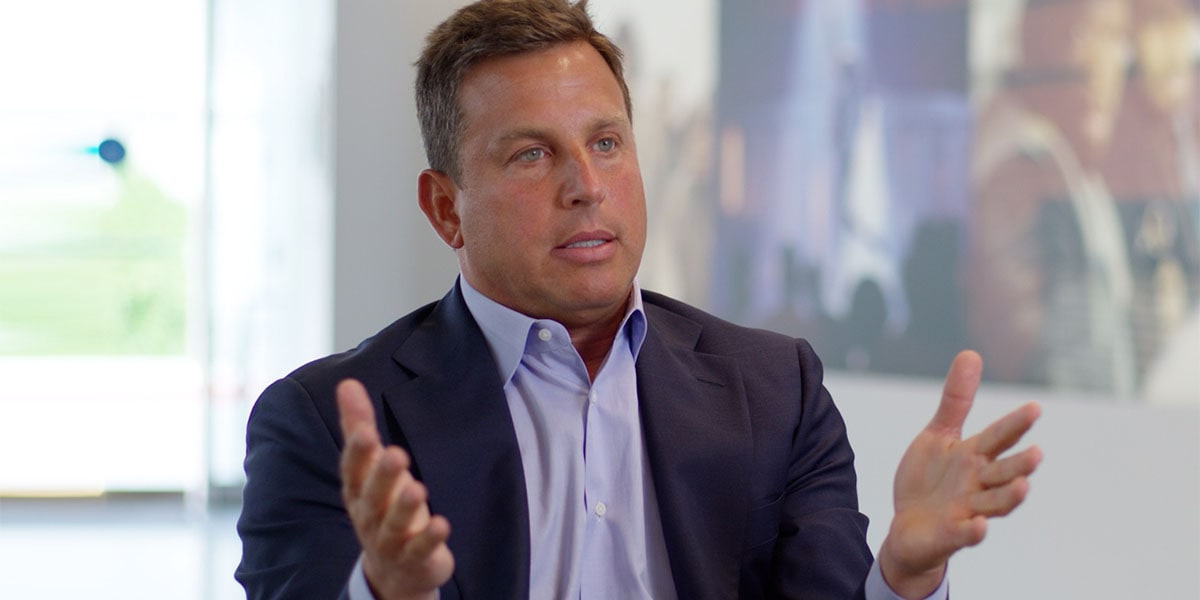
INTERVIEW The future of streaming is borderless Jeffrey Hirsch, the CEO of Starz, discusses what technology means for the future of streaming, how inclusive programming has been good for business, and why most shows are going to be borderless. “The shows that we’re developing in Spain, we see there’s a great role for them in the US and in Latin America, and in Europe, the Middle East, and North Africa,” he said in a recent interview. “And it is the same with the shows we’re developing in India, where we’re using global casts because we feel those stories can play everywhere.” 
MORE ON MCKINSEY.COM How business operations can respond to price increases | Companies can rethink their response to cost increases by going beyond conventional commercial levers to controlling costs and reducing the impact of volatility across an organization’s full spectrum of activities. Fix them first: Executing regulation-driven separations | Executives can improve their management of a large merger or acquisition by better understanding the remedies that antitrust regulators may hand down. How telcos can succeed in launching new businesses beyond connectivity | The barriers that once hampered efforts by telecommunications companies to launch new ventures beyond connectivity are weakening. Selecting the right business-building approach can help ensure that more flourish. 


THREE QUESTIONS FOR Scott Keller Scott Keller, a senior partner in McKinsey’s Southern California office, is a coauthor of CEO Excellence: The Six Mindsets That Distinguish the Best Leaders from the Rest. He is also a heavy-metal guitarist and songwriter who has recorded original music with members of Whitesnake, Testament, and Stone Sour. Let’s just say that your background is not typical for a management consultant. In your role as a CEO counselor, have you ever thought about whether rock or metal musicians would make great CEOs? Despite the fact that rock ‘n’ roll rebels against the 9-to-5 lifestyle, keeping a band together for decades of successfully writing and touring requires levels of collaboration, teamwork, and innovation that most business leaders would envy. I actually cowrote a McKinsey piece about this very topic called “How to Make Your Team R.O.C.K.” We spoke with Nancy Wilson of Heart, who talked about the importance of role clarity. Paul Stanley of Kiss talked about the need for both vision and execution. Roger Daltrey of The Who waxed lyrical about how crucial communication is. And Sammy Hagar talked about the core role of teamwork. I loved his observation about ego: “When someone, or everyone, thinks their ‘thing’ is the most important thing, it all falls apart. When mutual respect is there, magic can happen.” As part of the “research” for that article (often a jam session and a drink together), the drummer Matt Starr (who was playing for Mr. Big at the time) made a direct link to being a CEO. “Every serious musician is the CEO of themselves,” he said. “You find others who share the same objectives, get organized, pay attention to details, and prioritize where you spend your time to make it happen. I wonder how many employees in companies have the same drive?” That’s an interesting question to reflect on. You were featured in “Rock Camp: The Movie,” which follows campers as they attend Rock ‘n’ Roll Fantasy Camp with some of the legends of the genre, such as Jeff Beck, Alice Cooper, Slash, and Lita Ford. How did that come about? I was interviewed for the documentary because I had helped the CEO, David Fishof, when he was trying to improve the performance of his business. The film crew was interviewing me at home, and in the middle of the recording my special-needs son, Jackson, came home from school. Like many with special needs, he has a way of endearing himself to people. He started asking a lot of questions and then, out of the blue, he said: “You know what my new goal is? To play bass at Rock ‘n’ Roll Fantasy Camp!” Jackson didn’t play bass at the time, but for fun we walked over to my guitar rack and I tried to show him a few things (very unsuccessfully, I might add). Little did we know that we were being caught on film. A few months later I got a call from the documentary producers informing me that Jackson was far more interesting on film than I was and requesting that he come play bass at a Rock ‘n’ Roll Fantasy Camp being held two weeks later. During that time our whole family lived and breathed helping Jackson learn how to navigate the fretboard and play in time. When we got to camp, to borrow Sammy Hagar’s phrase, “magic happened.” You’re one of only a few hundred people to have visited every country in the world. How did you get started on that quest, and has music played a part in those experiences? My first adventure overseas was spending a semester of college in Santiago, Chile. I became involved in the heavy-metal scene there (shout-out to Gabriel from the band Dogma!), and when I traveled outside of Santiago, I always brought a charango (a mini-Andean guitar with five strings) with me. It was a great way to meet and entertain people. Later, when I started at McKinsey, every time I left the country on a work trip I’d tack on a visit to a new country. I always brought a travel guitar with me, and I learned about a lot of local bands and scenes I wouldn’t have explored otherwise (shout-out to the Spanish band Zenobia!). Over time, I wanted to share the experiences with my growing family, so the guitar was left behind and every vacation was “to somewhere dad hasn’t been yet.” I remember once getting a call from my oldest son’s elementary school asking why he was telling people he went to North Korea on spring break. Even though it was true, I’m not sure they ever believed it. In terms of what the journey has taught me, I think the best lesson has come from observing how my children embrace new people, cultures, and surroundings with insatiable curiosity and very little judgment. I strive to be childlike in that way (in addition to my childlike love for heavy metal!). — Edited by Barbara Tierney Share this Q & A 



BACKTALK Have feedback or other ideas? We’d love to hear from you. 
Tell us what you think 

Follow our thinking 



Share these insights Did you enjoy this newsletter? Forward it to colleagues and friends so they can subscribe too.
Was this issue forwarded to you? Sign up for it and sample our 40+ other free email subscriptions here.This email contains information about McKinsey’s research, insights, services, or events. By opening our emails or clicking on links, you agree to our use of cookies and web tracking technology. For more information on how we use and protect your information, please review our privacy policy. You received this email because you subscribed to The Shortlist newsletter. Manage subscriptions | Unsubscribe Copyright © 2022 | McKinsey & Company, 3 World Trade Center, 175 Greenwich Street, New York, NY 10007
by "McKinsey Shortlist" <publishing@email.mckinsey.com> - 02:33 - 1 Apr 2022 -
Why laughter really is the best medicine
McKinsey&Company
Lighten up on April Fools’ .

A laughing matter In the news • Goofy GIFs. Social media is filled with people posting GIFs—brief, looping animations—in honor of their creator, Stephen E. Wilhite, who passed away on March 14 at the age of 74. Wilhite, a computer programmer, invented the graphics interchange format (GIF) in 1987. Since then, GIFs—which Wilhite said is pronounced “jif”—have taken over the internet, having become widely used for expressing humor, sarcasm, and anxiety. The notorious “dancing baby” GIF that came out in 1996 was a favorite of Wilhite’s. [NYT] • When joking pays off. Ideally, in a negotiation, all parties are acting in good faith. Sometimes, though, you might find yourself dealing with someone who has a winner-take-all mindset, holds biases toward you, or is just a jerk. In a tough negotiation, humor is a powerful tool to wield, says one business professor who teaches negotiation skills at a leading US university. Cracking a joke about the negotiation (“So, we’re saying the same thing—we’re here to bluff and lie”) can defuse pressure and help break the ice. [Fast Company] 
“Fun can boost our resilience and our spirits in a way that makes it easier for us to cope with whatever life may throw our way.” 
On McKinsey.com • Playful and positive. Having fun should be at the top of our priority list, says Catherine Price, author of The Power of Fun: How to Feel Alive Again. Spending time being playful, connected, and in a state of flow (that is, utterly absorbed by an engaging experience) lowers stress and enhances emotional, mental, and physical health, adds Price. Focusing on funny and joyful things helps to counteract the brain’s tendency to perpetually scan for threats, which can keep us stuck in a cycle of negativity. • Lighthearted leadership. “When we are having fun, one of the prerequisites is that you’re not putting on a facade; you are actually expressing your authentic self,” says Price. By adopting a more lighthearted attitude, leaders can help others let their guard down. Using “props for fun,” such as providing a bowl filled with conversation prompts, can inspire colleagues to interact in new ways. For additional practices that can make the workplace more positive, fun, and enjoyable, read the full interview, part of our Author Talks series. — Edited by Belinda Yu Have more fun 
Was this forwarded to you? Sign up here. Or send us feedback — we’d love to hear from you. 

Follow our thinking 


This email contains information about McKinsey’s research, insights, services, or events. By opening our emails or clicking on links, you agree to our use of cookies and web tracking technology. For more information on how we use and protect your information, please review our privacy policy. You received this email because you subscribed to the On Point newsletter. Manage subscriptions | Unsubscribe Copyright © 2022 | McKinsey & Company, 3 World Trade Center, 175 Greenwich Street, New York, NY 10007
by "McKinsey On Point" <publishing@email.mckinsey.com> - 12:56 - 1 Apr 2022 -
The effects of long-term inflation for the Defense Department
the Daily read
Understand the effects .
Share this email 



AN ARTICLE A DAY, PICKED BY OUR EDITORS 
Everyone is dealing with the effects of inflation these days, and the US Department of Defense (DoD) is no exception. The annual inflation rate hit 7 percent at the end of 2021—the highest level since 1982—and some experts believe that prices could continue to rise. If this is the case, the DoD could lose over $100 billion in purchasing power within five years, according to McKinsey models. This poses many risks not only for the DoD, but also many private companies at all levels of the value chain. A new article breaks down what defense industry leaders can do to address these risks as we navigate these uncertain times. You don’t want to miss it. — Joyce Yoo, digital editor, New York 
The $773 billion question: Inflation’s impact on defense spending How will the Defense Department deal with possible long-term inflation and price increases for its most important programs? Understand the effects 

Quote of the Day “As a retailer, you have to think about how you’re improving the employee experience and the value proposition so you can continue to attract people. When you’re hiring and onboarding them, think about the best way to build their capability, incentivize them, excite them, and continue to develop and broaden their skill set.” —Tiffany Burns, McKinsey partner, on attracting talent and the future of stores in a new episode of the McKinsey on Consumer and Retail podcast 
Chart of the Day 
See today’s chart 
Also New 

Six strategic priorities for modern merchant leaders Merchant leaders must distinguish their brands’ assortment and value proposition in an evolving landscape. A handful of investments could help them navigate the complexities of modern retailing. Take strategic steps 


The state of diversity in US private equity Taking a closer look at the data reveals private equity’s progress, remaining challenges, and the road ahead on diversity. Push the boundaries 


Lighthouses reveal a playbook for responsible industry transformation The advanced factories of the Global Lighthouse Network show how sustainability and workforce engagement can accelerate and scale Fourth Industrial Revolution transformation—responsibly. Try a different approach 


Follow our thinking 



Share these insights Did you enjoy this newsletter? Forward it to colleagues and friends so they can subscribe too.
Was this issue forwarded to you? Sign up for it and sample our 40+ other free email subscriptions here.This email contains information about McKinsey’s research, insights, services, or events. By opening our emails or clicking on links, you agree to our use of cookies and web tracking technology. For more information on how we use and protect your information, please review our privacy policy. You received this email because you subscribed to the Daily Read newsletter. Manage subscriptions | Unsubscribe Copyright © 2022 | McKinsey & Company, 3 World Trade Center, 175 Greenwich Street, New York, NY 10007
by "McKinsey Daily Read" <publishing@email.mckinsey.com> - 05:14 - 31 Mar 2022 -
Take a trip to outer space
McKinsey&Company
A new edition of The Next Normal
Share this email 



The Next Normal | Conjuring the future, one industry at a time 
The future of space: It’s getting crowded out there Could you soon be taking trips to outer space? Some experts think so. As rocket launches have gotten cheaper, thousands more satellites—and more people than ever before—can venture into orbit. But more objects in space also mean more space debris and higher risks of collisions. In this edition of The Next Normal, McKinsey experts and industry executives envision the space industry’s next decade. Watch this space 

Follow our thinking 


McKinsey Insights - Get our latest
thinking on your iPhone, iPad, or Android

This email contains information about McKinsey’s research, insights, services, or events. By opening our emails or clicking on links, you agree to our use of cookies and web tracking technology. For more information on how we use and protect your information, please review our privacy policy. You received this email because you subscribed to The Next Normal newsletter list. Manage subscriptions | Unsubscribe Copyright © 2022 | McKinsey & Company, 3 World Trade Center, 175 Greenwich Street, New York, NY 10007
by "McKinsey & Company" <publishing@email.mckinsey.com> - 12:47 - 31 Mar 2022 -
[March Update] Exciting stories and essential reading from Remote!
[March Update] Exciting stories and essential reading from Remote!
Learn more about Remote for Ukraine, the Remote API, the 2022 Influencer Report, and more in this month's update!Hi MD,
Welcome to your March update from the team at Remote! We are thrilled to have you here. Read on for more about how Remote has mobilized to help those affected by the war in Ukraine; the latest from the blog, including details on the launch of our very own API; and the 2022 Remote Influencer Report.
Remote for Ukraine
As the invasion of Ukraine continues, we are working around the clock to do what we can to support those affected. We've created a list of useful resources from Remote, our partners, and other companies around the world.
Learn more about Remote’s support for Ukraine on our blog.
most popular publication
Who are 2022’s biggest remote work influencers?
The 2022 Remote Influencer Report is live! In this year's report, we highlight 150 of the most impactful global thinkers and leaders in the future of work.
best from the blog
It’s official! We've launched our Remote API.
We’re excited about the official launch of the Remote API to enable our partners to white label Remote’s global employment solutions directly into their platform.
Remote named leader in Multi-Country Payroll!
We were just named as a leader in the Multi-Country Payroll Category by G2 Spring 2022. Learn more about how Remote can help manage global payroll and compliance for your team in our global payroll guide.
Meet our newest Remote Marketplace partners
We’re thrilled to add TravelPerk and Firstbase.io to our growing list of partners focused on helping their customers scale globally.
UPCOMING EVENTS
Remote Connect 2022
Date: April 5-6, 2022Join our first-of-its-kind global conference for business and thought leaders shaping the new world of work! Join 40 guest speakers and over 5000 attendees in this virtual event for global employment.You received this email because you are subscribed to Marketing communications from Remote Technology, Inc.
Update your email preferences to choose the types of emails you receive.
Unsubscribe from all future emailsRemote Technology, Inc.
Copyright © 2022 Remote Technology, Inc. All rights reserved.
18 Bartol St. #1163 San Francisco California
by "Remote" <hello@remote-comms.com> - 11:04 - 31 Mar 2022 -
A trans leader on the importance of telling your story
Intersection Subject Line
Plus: Who are you calling ‘diverse’? .
Share this email 



DELIVERING ON DIVERSITY, GENDER EQUALITY, AND INCLUSION 
Today is International Transgender Day of Visibility. In this issue, we consider the work of journalist Imara Jones and what companies can do to advance trans inclusion in the workplace and society. Plus, the problem with hiring for “culture fit.” THE VOICE 
Photo by Richie Shazam; dress by Busayo; hair by Sammy LaCombe; makeup by Starr Simpson “I can’t be detached anymore. I’m a part of the community, so I’m part of the news—and not that many people who are trans have microphones. I feel the need to be visible and to tell people who I am.”
— Imara JonesImara Jones is the founder and CEO of TransLash Media, a nonprofit organization that tackles bias and hostility against transgender people in the US. In an interview for the NYC Trans Oral History Project, a landmark effort to record, preserve, and share trans histories, Jones explains why she could no longer cover issues that affect trans Americans without telling her own story: “I realized that I was the subject. I was the news.” Working on TransLash, she says, “has taught me that my voice is important, that I’m important, that our stories are important, and they have to be told.” Jones notes that while more and more brands are featuring trans models in their advertising, “that doesn’t really affirm our humanity or ensure that we have full rights in society—and the [financial] benefits accrue to massive corporations from which trans people are largely excluded.” McKinsey research shows that transgender people are underrepresented in the US workforce and face widespread workplace discrimination. In a 2021 McKinsey survey, less than a third of transgender respondents said they felt comfortable being fully out about their gender identity at work. How can companies meaningfully increase trans representation and inclusion? Jones points out that external visibility should be backed by workplace policies and initiatives—and McKinsey research points to paid internship programs as a step in the right direction. As Jones puts it: “It would be really powerful if a company said, ‘We’re going to have all trans models—and we’re going to start an internship program for young trans people. And we’re going to pay them.’ That’s actually changing something.” Jones is using her own platform to amplify trans voices and explore ways to help more trans people join the industry and tell different stories. The animating principle: “I don’t believe in one person changing everything; I think one person helps others to change everything.” 
THE VIEW 
“Culture fit is coded bias.”
— Ruchika TulshyanIn a recent edition of McKinsey’s Author Talks, inclusion strategist Ruchika Tulshyan discusses why “leaning in” is falling short, the problem with calling someone “diverse,” and why organizations should hire for “culture add” instead of “culture fit.” — Edited by Julia Arnous, an editor in McKinsey’s Boston office 

Follow our thinking 



Share these insights Did you enjoy this newsletter? Forward it to colleagues and friends so they can subscribe too.
Was this issue forwarded to you? Sign up for it and sample our 40+ other free email subscriptions here.This email contains information about McKinsey’s research, insights, services, or events. By opening our emails or clicking on links, you agree to our use of cookies and web tracking technology. For more information on how we use and protect your information, please review our privacy policy. You received this email because you subscribed to the Intersection newsletter. Manage subscriptions | Unsubscribe Copyright © 2022 | McKinsey & Company, 3 World Trade Center, 175 Greenwich Street, New York, NY 10007
by "McKinsey Intersection" <publishing@email.mckinsey.com> - 02:51 - 31 Mar 2022 -
From stocks to meteorites, the space economy is up for grabs
McKinsey&Company
To Mars—and beyond .

Doing business in space In the news • The price is right. You’d expect meteorites colliding with Earth to sell for hefty sums, but the objects they hit bring in even more. A doghouse struck by a meteorite (luckily, the inhabitant, a German shepherd, wasn’t hurt) recently sold for $44,000 at an annual meteorite auction, whereas the space rock itself fetched only about half the price. It’s extremely rare for meteorites to strike anything when they land on Earth, so when they do, whatever they hit acquires high value. A car hit by a meteorite in 2007 sold for a record $230,000. [CNN] • Game-changing tech. The share prices of some space start-ups are drifting back down to earth after being propelled into the stratosphere by amateur traders last year. Still, companies are developing truly game-changing space technologies, which could push the space economy to double to $900 billion by 2030. The rising demand for smaller satellites that closely orbit the Earth drives much of investor forecasts. A handful of companies, for example, have successfully launched smaller payloads into space on smaller rockets. [WSJ] 
“We have to stop thinking about ourselves as space companies and start thinking about the actual services that we’re providing.” 
On McKinsey.com • Humans on Mars. The idea of human settlements on Mars isn’t farfetched, but it will take massive technological innovation, says Lockheed Martin’s Joe Landon. “We are investing quite a bit to make the systems needed,” says Landon. “There has been extensive exploration beyond the moon, and even beyond Mars, using robotic spacecraft.” The next frontier will be to develop technologies to sustain humans in space and during lengthy space flights, such as propulsion technology for faster travel and AI systems that allow astronauts to live and work in space with limited support from Earth. • Space is a place. And it’s a place that will need all kinds of businesses, Landon says. To establish a robust industrial sector in space—mirroring that on Earth—governments and leading companies need to collaborate to bring services, talent, and entrepreneurial savvy to space ventures. For example, to launch a scientific mission to the moon, a national space agency may not need its own communications links, power, or transportation; instead, it could buy them as a service. Read the full interview to learn more about creating value in the space sector. — Edited by Rama Ramaswami See the future of space 
Was this forwarded to you? Sign up here. Or send us feedback — we’d love to hear from you. 

Follow our thinking 


This email contains information about McKinsey’s research, insights, services, or events. By opening our emails or clicking on links, you agree to our use of cookies and web tracking technology. For more information on how we use and protect your information, please review our privacy policy. You received this email because you subscribed to the On Point newsletter. Manage subscriptions | Unsubscribe Copyright © 2022 | McKinsey & Company, 3 World Trade Center, 175 Greenwich Street, New York, NY 10007
by "McKinsey On Point" <publishing@email.mckinsey.com> - 12:10 - 31 Mar 2022 -
What we can do to add six more years to our lives
the Daily read
Aim high .
Share this email 



AN ARTICLE A DAY, PICKED BY OUR EDITORS 
Who doesn’t want to live a happier, healthier life? While we’ve made incredible progress in human health over the past century, there’s so much more we can do to improve the quality of life for everyone. According to a new McKinsey Health Institute report, humanity has the potential to add as many as 45 billion extra years of higher-quality life over the next decade—roughly six years per person on average. Explore the six shifts needed to make this a reality and be sure to download the full report. — Katherine Tam, digital editor, New York 
Adding years to life and life to years At least six years of higher quality life for everyone is within reach. Aim high 

Quote of the Day “There are a number of new fellowships designed to help make the aerospace industry a more diverse and dynamic environment, and the individuals who become alumni of these fellowships are going to change the world. I really want to see space companies and agencies have equal representation of women and minorities.” —Debra Facktor on the future of the space workforce in “Making aerospace ‘diverse and dynamic’: An interview with Airbus U.S.’s Debra Facktor” 
Chart of the Day 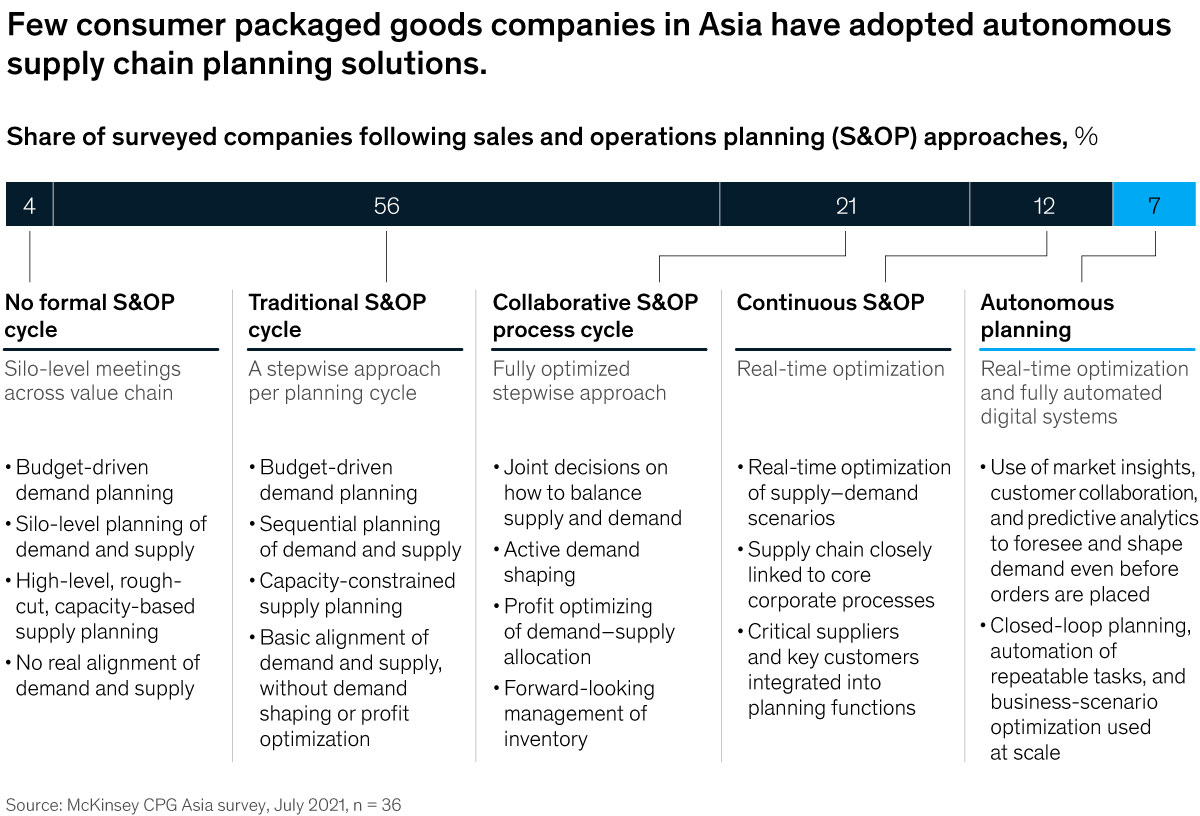
See today’s chart 
Also New 

Private markets 2022: Private markets rally to new heights Updated annually, our Global Private Markets Review offers the best of our research and insight into private equity, real estate, debt, infrastructure, and natural resources. Explore the findings from our most recent report and scroll for past years’ reports. Read the report 
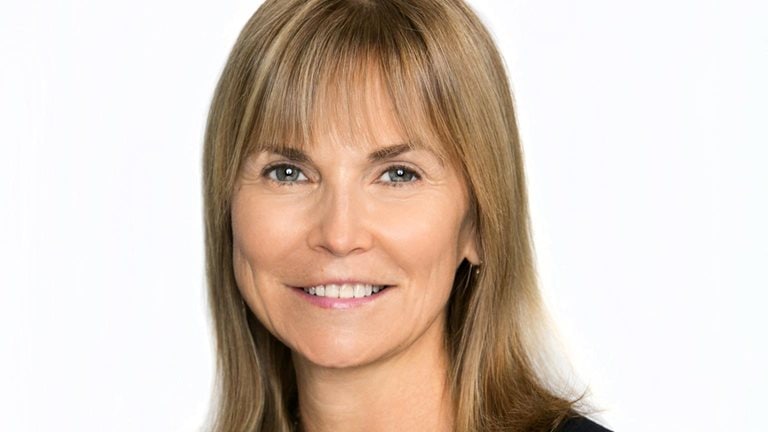

Forging your own path: Sandra Horbach on building a career in private equity The cohead of US buyout and growth at Carlyle shares thoughts on the state of private equity, the path forward on diversity and inclusion, and advice on building a successful career in the industry. Get perspective 


The McKinsey Crossword: What do you make of it Sharpen your problem-solving skills the McKinsey way, with our weekly crossword. Each puzzle is created with the McKinsey audience in mind, and includes a subtle (and sometimes not-so-subtle) business theme for you to find. Answers that are directionally correct may not cut it if you’re looking for a quick win. Play now 


Follow our thinking 



Share these insights Did you enjoy this newsletter? Forward it to colleagues and friends so they can subscribe too.
Was this issue forwarded to you? Sign up for it and sample our 40+ other free email subscriptions here.This email contains information about McKinsey’s research, insights, services, or events. By opening our emails or clicking on links, you agree to our use of cookies and web tracking technology. For more information on how we use and protect your information, please review our privacy policy. You received this email because you subscribed to the Daily Read newsletter. Manage subscriptions | Unsubscribe Copyright © 2022 | McKinsey & Company, 3 World Trade Center, 175 Greenwich Street, New York, NY 10007
by "McKinsey Daily Read" <publishing@email.mckinsey.com> - 06:40 - 30 Mar 2022 -
Making aerospace ‘diverse and dynamic’: An interview with Airbus U.S.’s Debra Facktor
McKinsey&Company
Shoot for the stars .
Share this email 



New from McKinsey & Company 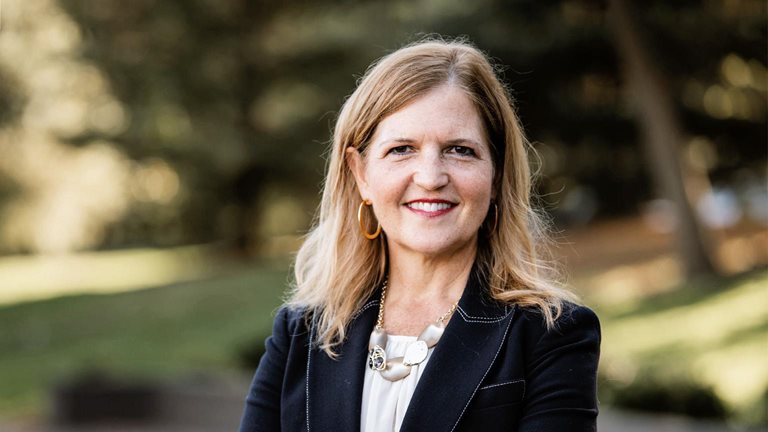
Making aerospace ‘diverse and dynamic’: An interview with Airbus U.S.’s Debra Facktor One of the highest-ranking female executives in the aerospace industry foresees a space economy—and a space workforce—that look very different from today’s. Shoot for the stars 



Related Reading 
Building a better planet with satellite data 

Prepare for launch: The future of space exploration 


Follow our thinking 


McKinsey Insights - Get our latest
thinking on your iPhone, iPad, or Android


Share these insights Did you enjoy this newsletter? Forward it to colleagues and friends so they can subscribe too.
Was this issue forwarded to you? Sign up for it and sample our 40+ other free email subscriptions here.This email contains information about McKinsey’s research, insights, services, or events. By opening our emails or clicking on links, you agree to our use of cookies and web tracking technology. For more information on how we use and protect your information, please review our privacy policy. You received this email because you subscribed to The Next Normal newsletter list. Manage subscriptions | Unsubscribe Copyright © 2022 | McKinsey & Company, 3 World Trade Center, 175 Greenwich Street, New York, NY 10007
by "McKinsey & Company" <publishing@email.mckinsey.com> - 12:53 - 30 Mar 2022 -
It’s a hard world. Soft skills can help.
McKinsey&Company
Sought-after soft skills .

(Soft) skills to pay the bills In the news • Happy leadership. One popular business school course at a leading university is teaching the softer side of leadership, with the key tenet that happy leaders are effective ones. But happiness doesn’t just magically happen. Happiness, students learn, can be cultivated within yourself, and then you can cultivate it within your teams. And that’s especially important when workers are quitting their jobs at a rapid pace, with many organizations rethinking the nature of work with a focus on employee morale and happiness. [WSJ] • Wanted: soft skills. In today’s booming job market, the most in-demand skills are soft skills, according to a recent global report about the future of work. In our new hybrid world of remote and in-person work and amid a backdrop of historic resignation rates, hiring managers are eager to find candidates who are dependable, resilient, and good communicators. But more than half of employers interviewed—58%—reported that finding candidates with these, and other, soft skills has been their top hiring challenge throughout the COVID-19 pandemic. [CNBC] 
As workers interact with ever-smarter machines, the demand for soft skills is beginning to surge. 
On McKinsey.com • What’s in a soft skill? A soft skill enables you to interact well with others. It’s nontechnical and typically falls into categories such as communication and negotiation, adaptability and learning, teaching and training, and interpersonal abilities, including empathy. For organizations, developing and rewarding soft skills is becoming all the more crucial in our ever-automated world. Machines are getting smarter, and as they take over more basic, repetitive, and even physical tasks, the need for workers with social, emotional, and technological skills will be higher than ever. • Hiring woes. While companies are keen to hire workers with soft skills, HR professionals are having difficulty finding them. Specifically, many candidates lack key skills such as problem solving, critical thinking, creativity, and the ability to deal with complexity. And the skills mismatch is largest in the most automated departments, such as IT and data analytics. Dive into the McKinsey Quarterly Five Fifty—in which we quickly brief readers, and also offer links to deeper dives—on soft skills, and why they matter more than ever in a hard world. — Edited by Justine Jablonska Get smart about soft skills 
Was this forwarded to you? Sign up here. Or send us feedback — we’d love to hear from you. 

Follow our thinking 


This email contains information about McKinsey’s research, insights, services, or events. By opening our emails or clicking on links, you agree to our use of cookies and web tracking technology. For more information on how we use and protect your information, please review our privacy policy. You received this email because you subscribed to the On Point newsletter. Manage subscriptions | Unsubscribe Copyright © 2022 | McKinsey & Company, 3 World Trade Center, 175 Greenwich Street, New York, NY 10007
by "McKinsey On Point" <publishing@email.mckinsey.com> - 12:17 - 30 Mar 2022 -
Outer space in 2030
the Daily read
Shoot for the stars .
Share this email 



AN ARTICLE A DAY, PICKED BY OUR EDITORS 
Are you ready for your next vacation? How about a trip to space? Some experts think this far-out idea could one day become a reality. Space activity is already taking off as we gain more access to the cosmos, including utilizing satellites to help us communicate and stay connected, and managing space debris. A new video explores why now is an exciting time for the space industry, and what’s in store for the space economy of tomorrow. Be sure to check it out. — Joyce Yoo, digital editor, New York 
Outer space in 2030 In this video, three of McKinsey’s aerospace experts describe the ways in which future activity in space will benefit people on Earth—and some challenges that could arise along the way. Shoot for the stars 

Quote of the Day “ESG [environmental, social, governance] is climate change, worker conditions, diversity; it’s everything. There’s so much that sponsors can do to help these companies do better. We don’t have a dedicated impact or ESG platform; we’re bringing ESG in and trying to embed it across all our portfolio companies.” —Sandra Horbach, managing director and cohead of US buyout and growth at The Carlyle Group, on how ESG are transforming the investment industry in a new interview 
Chart of the Day 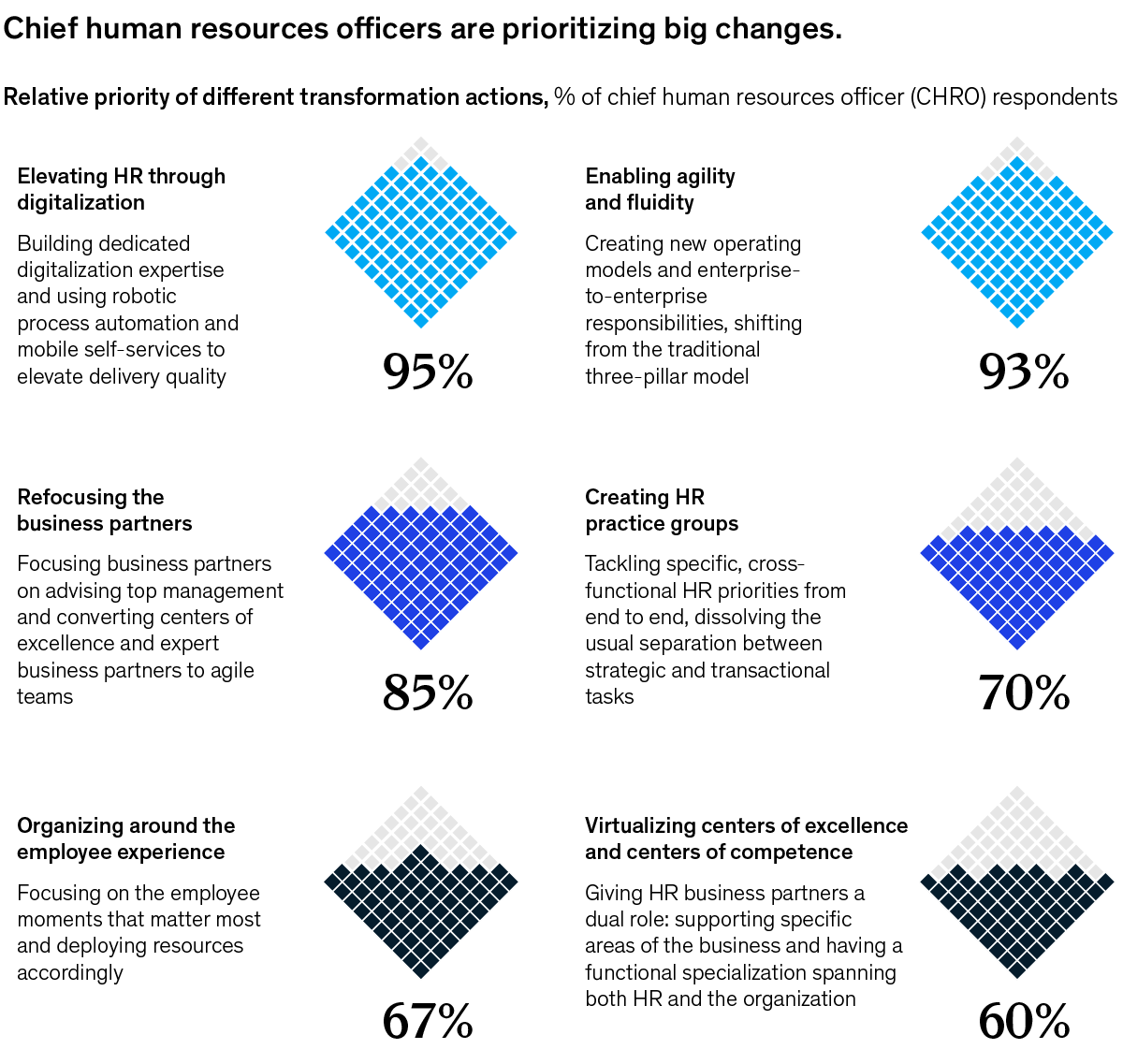
See today’s chart 
Also New 

Taking the first steps toward net-zero emissions The path to net-zero emissions is full of challenges. Leadership must understand the risks and commit to change now—or face an even thornier transition down the road. Shift to green 


Forecasting the future of stores Shoppers’ behaviors and expectations have changed dramatically—and continue to evolve. If retailers want to keep their physical stores relevant, here are five things they’ll need to get right. Look ahead 


Author Talks: Don’t spoil the fun Even in difficult times, says Catherine Price, fun should be a priority, not an afterthought. Act with intention 


Follow our thinking 



Share these insights Did you enjoy this newsletter? Forward it to colleagues and friends so they can subscribe too.
Was this issue forwarded to you? Sign up for it and sample our 40+ other free email subscriptions here.This email contains information about McKinsey’s research, insights, services, or events. By opening our emails or clicking on links, you agree to our use of cookies and web tracking technology. For more information on how we use and protect your information, please review our privacy policy. You received this email because you subscribed to the Daily Read newsletter. Manage subscriptions | Unsubscribe Copyright © 2022 | McKinsey & Company, 3 World Trade Center, 175 Greenwich Street, New York, NY 10007
by "McKinsey Daily Read" <publishing@email.mckinsey.com> - 06:32 - 29 Mar 2022 -
Join Sumo Logic for “Mada’s Magical Marvels"
Sumo Logic
Last chance to register!

 Dear Mohammad,
Dear Mohammad,
Take a break from the every day and join Sumo Logic as we dive into a world of magical illusion with Mada’s Magical Marvels featuring “Mr. Magic,” Adam Mada.
Get the whole family together for a show unlike any other, conjuring laughs from thin air and sharing the odd secret trick of the trade along the way!
You’ll be on the edge of your seat, guessing what comes next!
Mada’s Magical Marvels
Thursday, March 31, 2022
4 p.m. AESTPlease confirm your attendance promptly to secure your seat and join Sumo Logic for some magical fun!
Take care,
The Sumo Logic TeamSumo Logic, Level 9, 64 York Street, Sydney, NSW 2000
© 2022 Sumo Logic, All rights reserved.Unsubscribe 


by "Sumo Logic" <marketing-info@sumologic.com> - 05:00 - 29 Mar 2022 -
New user help: all the ways to query your data
New Relic
It’s easy to define the exact conditions to know when to worry.
Insight unleashed
New Relic offers powerful and flexible querying capabilities that let you analyze all of your collected data. Start with the point-and-click query builder, or build advanced queries with New Relic Query Language (NRQL).
Query your data 
Why you should do this
To get insight into your applications, hosts, and business-important activity. Correlate performance metrics with business KPIs or accelerate mean time to detection (MTTD) and resolution (MTTR).What this does
NRQL lets you easily query data collected from your applications. Turn your queries into visualizations to interpret what your data says about your application and your business.Common uses
- Answer questions about your application or infrastructure
- Create custom charts and dashboards
- Set alerts based on custom criteria
Query your data If you have questions along the way, check our docs, community, or take a hands-on lab.
 View in browser
View in browser
Unsubscribe or Change Your Email Address and preferences at any time.
For information about our privacy practieces, see our Privacy Policy.
Need to contact New Relic? You can chat or call us at 888-643-8776.
New Relic, Inc. 188 Spear St, San Franciso, CA 94105.
© 2021 New Relic, Inc. All rights reserved.
New Relic logo are trademarks of New Relic, Inc.
by "Max from New Relic" <mfrancisco@newrelic.com> - 12:01 - 29 Mar 2022 -
Save your spot for Remote Connect 2022 - 1 week left!
Save your spot for Remote Connect 2022 - 1 week left!
Hi MD,
We’re counting down the days until Remote Connect 2022, our first annual event focused on building belonging in the new world of work.
Remote Connect brings together the businesses and thought leaders shaping the new world of work. Join us to gain insights and bold ideas to help us all build better, grow together, and level up in today’s competitive job market.
See you soon,
Remote
You received this email because you are subscribed to Marketing communications from Remote Technology, Inc.
Update your email preferences to choose the types of emails you receive.
Unsubscribe from all future emailsRemote Technology, Inc.
Copyright © 2022 Remote Technology, Inc. All rights reserved.
18 Bartol St. #1163 San Francisco California
by "Remote" <hello@remote-comms.com> - 10:00 - 29 Mar 2022 -
A million women are still missing from the workforce. Here’s how to win them back.
McKinsey&Company
How to think about ‘balance’ .

Parents stretched thin In the news • Protective policies. If you’re a mom, whether you have quit your job or kept it during the COVID-19 crisis may have depended in part on where you live. Many US moms have yet to rejoin the workforce, while UK employers in 2021 actually increased the percentage of mothers working for them. In Northern and Western Europe, men were more likely than women to exit the workforce during the COVID-19 crisis, while the opposite was true in the US. European benefits such as paid leaves of absence may have helped moms keep their jobs. [WSJ] • Forget about ‘balance.’ Working moms should give up on ever attaining work–life balance, advises a female partner at a venture-capital firm. Instead, she suggests, they should accept that “every day is about making trade-offs and finding comfort in the fact that a decision was made.” Parents with jobs will sometimes need to pay more attention to what’s going on at home, while at other times, work will be their primary focus. Particularly during the COVID-19 pandemic, “we simply cannot be everything to everyone all the time.” [Fortune] 
“In the early pandemic, almost 12 million women were pushed out of the workforce. The vast majority of those were working moms.” 
On McKinsey.com • Dwindling empathy. Millions of working moms have departed the workforce during the COVID-19 pandemic, essentially trading paid labor for unpaid labor, says Reshma Saujani, founder of Girls Who Code. What’s more, two years into the COVID-19 pandemic, more than a million women in the US are still missing from the workforce. At the same time, employer sympathy for the plight of working moms is dwindling, adds Saujani, author of Pay Up: The Future of Women and Work (and Why It’s Different Than You Think). • Who’s watching the kids? Fewer than 11% of US employers subsidize childcare. Yet multiple studies show that moms can’t get back to work until they have reliable, affordable childcare. “Childcare is an economic issue, not a personal issue,” says Saujani. “Offering childcare as a benefit is a way for companies to manage their attrition.” For more on what’s holding working moms back and what men can do to help, read the full interview, part of our Author Talks series. — Edited by Belinda Yu Get moms back to work 
Was this forwarded to you? Sign up here. Or send us feedback — we’d love to hear from you. 

Follow our thinking 


This email contains information about McKinsey’s research, insights, services, or events. By opening our emails or clicking on links, you agree to our use of cookies and web tracking technology. For more information on how we use and protect your information, please review our privacy policy. You received this email because you subscribed to the On Point newsletter. Manage subscriptions | Unsubscribe Copyright © 2022 | McKinsey & Company, 3 World Trade Center, 175 Greenwich Street, New York, NY 10007
by "McKinsey On Point" <publishing@email.mckinsey.com> - 10:08 - 28 Mar 2022 -
[Webinar Invite] The Designer Series with SwaggerHub
Join us for best practices in onboarding teams into SwaggerHub!Hey Abul,
Join us on March 29th for the newest installment of "The Designer Series", our monthly tutorial to highlight a specific SwaggerHub use case.
In this month's installment, we will be covering the value of SwaggerHub for development teams as well as tips for how to navigate onboarding new team members into SwaggerHub!
Highlights of the upcoming session include:- How to integrate SwaggerHub into your team's development workflow
- How to foster incremental growth while balancing organizational change
- How to position & introduce SwaggerHub to your team
- How to reinforce the value of a design-first approach to API development
To join us for this session, you can register here: "The Designer Series: Crawl, Walk, Run with SwaggerHub"
Hope to see you there,
Molly Farmer,
Senior Marketing Specialist at SmartBear
This email was sent to info@learn.odoo.com by SmartBear Software, 450 Artisan Way, Somerville, MA. 02145, 617.684.2600, www.smartbear.com. We hope you found this email of interest. However, we value your privacy. Please click here to Unsubscribe or manage mail preferences. Privacy Policy.
by "Molly from SmartBear" <swaggerhub-team@smartbearmail.com> - 09:03 - 28 Mar 2022 -
Forging your own path: Sandra Horbach on building a career in private equity
the Daily read
Get perspective .
Share this email 



AN ARTICLE A DAY, PICKED BY OUR EDITORS 
There’s been a ton of growth in private equity over the past couple of decades. Technology has been a driving force in accelerating change, and this has allowed for more interesting and transformative investment opportunities. One area that could use even more change is a focus on diversity, especially for senior leaders, according to Sandra Horbach, managing director and cohead of US buyout and growth at Carlyle. “We really think diverse teams result in better investment decisions. I’ve seen it over and over again: when we bring in diverse perspectives, we just come out with a better outcome. That’s true of investment decisions.” Get her perspective on the state of private equity today, the path forward on diversity and inclusion, and more in a new interview. — Joyce Yoo, digital editor, New York 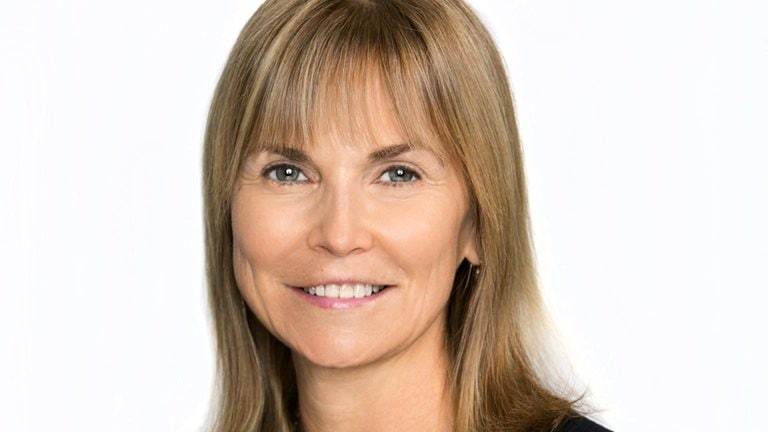
Forging your own path: Sandra Horbach on building a career in private equity The cohead of US buyout and growth at Carlyle shares thoughts on the state of private equity, the path forward on diversity and inclusion, and advice on building a successful career in the industry. Get perspective 

Quote of the Day “One of my hopes for the book, in addition to its being a fun read, is a benefit I’ve also seen for myself: it helps us shift away from our natural tendency to focus on the negative and actually begin to appreciate some of the other stuff that’s much more positive that happens all the time, even in difficult times.” —Catherine Price, author and science journalist, on the power of fun in a new Author Talks interview 
Chart of the Day 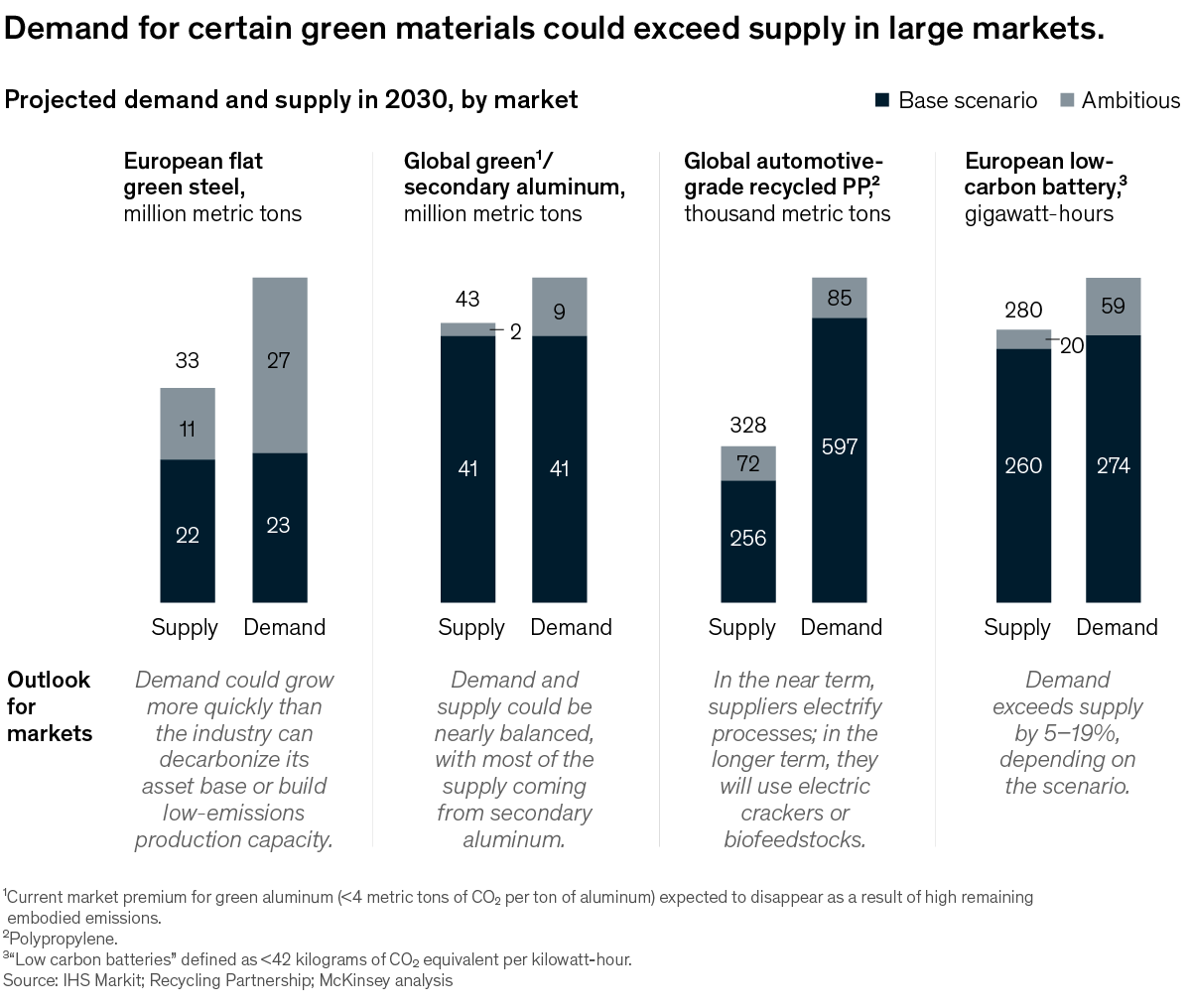
See today’s chart 
Also New 

Cracking the complexity code in embedded systems development How to manage—and eventually master—complexity in embedded systems development. Take a 360-degree perspective 


The flip side of large M&A deals Research shows there is a 50-50 chance that companies pursuing large M&A deals will outperform industry peers. Here are the four actions executives can take to increase those odds. Take a chance 


Seven steps to help protect your ERP system against cyberattacks Many companies’ enterprise resource planning systems, which house their most valuable data, are still too vulnerable. Reduce the threat 


Follow our thinking 



Share these insights Did you enjoy this newsletter? Forward it to colleagues and friends so they can subscribe too.
Was this issue forwarded to you? Sign up for it and sample our 40+ other free email subscriptions here.This email contains information about McKinsey’s research, insights, services, or events. By opening our emails or clicking on links, you agree to our use of cookies and web tracking technology. For more information on how we use and protect your information, please review our privacy policy. You received this email because you subscribed to the Daily Read newsletter. Manage subscriptions | Unsubscribe Copyright © 2022 | McKinsey & Company, 3 World Trade Center, 175 Greenwich Street, New York, NY 10007
by "McKinsey Daily Read" <publishing@email.mckinsey.com> - 06:31 - 28 Mar 2022
















